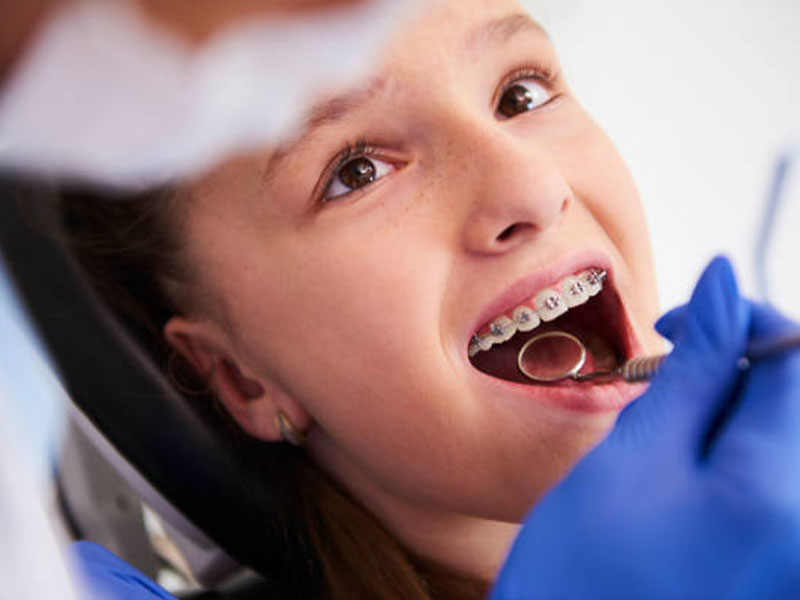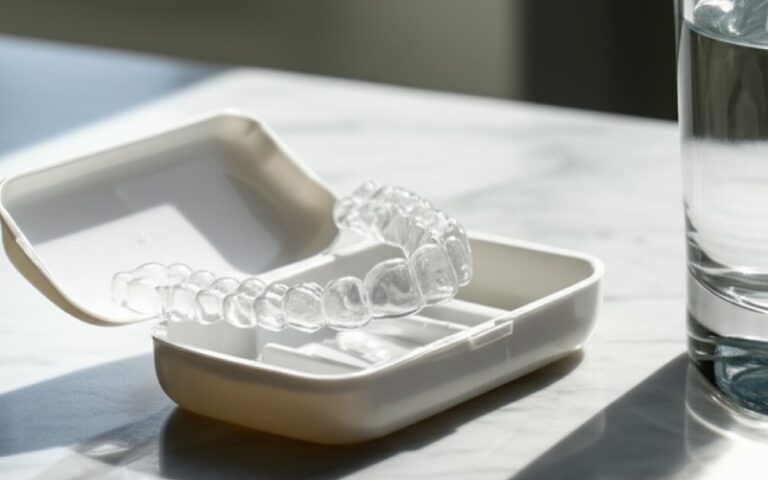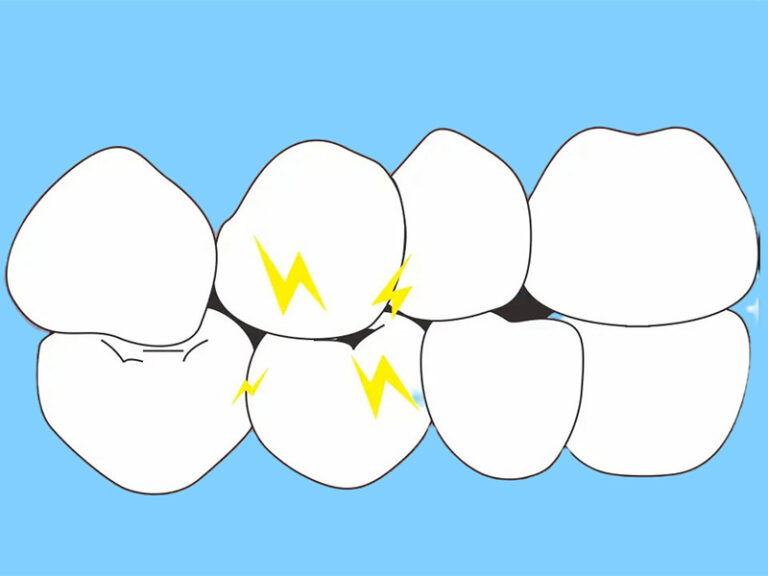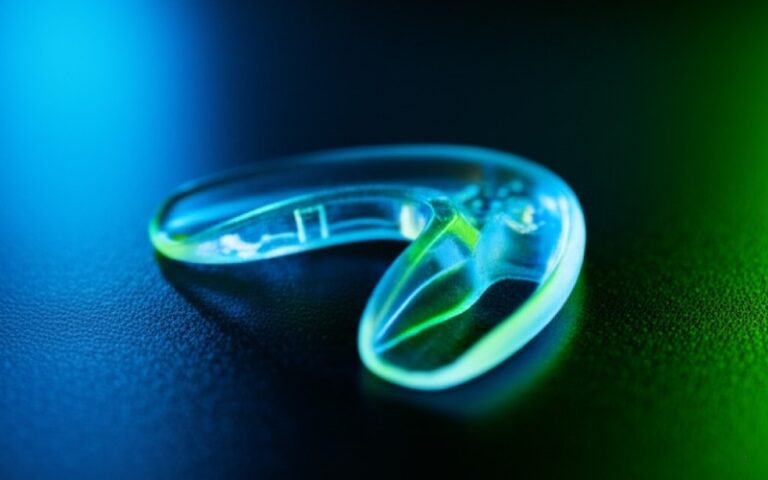
The Difference Between Pediatric Dentistry and Orthodontics for Your Child’s Oral Health
You hear the terms pediatric dentist and orthodontist, but what’s the real difference? Understanding how these two fields work together is the key to giving your child the best possible start for a lifetime of healthy teeth.
This article is for any parent who wants to understand their child’s dental journey. We will break down the roles of pediatric dentistry and orthodontics. We will explain how they team up to protect your child’s oral health and create a beautiful, confident smile. Reading this will help you make smart choices for your child’s dental care from their very first tooth.
Table of Contents
What Exactly is Pediatric Dentistry?
Think of a pediatric dentist as a pediatrician for your child’s mouth. Their job is to manage your child’s oral health completely. They are trained to handle the unique dental development of young patients.
A pediatric dentist does more than just check for cavities. They teach proper oral hygiene practices. They perform regular cleanings and apply fluoride to keep each tooth strong. They also monitor the growth of your child’s teeth and jaws. Their main goal is preventive care. This helps avoid common problems like tooth decay and gum disease. This field of dentistry focuses on the oral health needs of a growing child, making sure every single tooth is cared for.
This special focus on children is so important. A pediatric dentist creates a friendly and positive environment. This helps children feel comfortable and unafraid. A good experience early on can lead to a lifetime of good dental health habits. They manage everything from the eruption of the first tooth to the arrival of permanent teeth. This comprehensive care sets the stage for future orthodontic work if it’s needed.
So, What is the Role of Orthodontics?
Now, let’s talk about orthodontics. While your pediatric dentist is the primary doctor for your child’s mouth, an orthodontist is a specialist with a very specific job. The role of orthodontics is to correct the alignment of teeth and jaws. If you see a crooked tooth or your child has a bad bite, an orthodontist is the expert you need to see. This is a subset of pediatric dentistry that focuses on correcting these issues.
The field of orthodontics is all about how the teeth and jaw fit together. An orthodontist goes through extra years of training after dental school just to master this. They diagnose and treat something called malocclusion, which is the technical term for a bad bite. This can include problems like an overbite, underbite, or teeth that overcrowd each other. Orthodontics specializes in creating a straight, functional, and healthy smile.
The most common tools used in orthodontics are a brace or clear aligners. These devices gently move each tooth into its proper place over time. The goal of orthodontics is not just about looks. Proper teeth and jaw alignment helps with chewing, speaking, and makes it easier to keep every tooth clean. This reduces the risk of future dental problems.

Why is Early Orthodontic Care Important for My Child?
You might think that orthodontics is something for teenagers. But early orthodontic evaluation is a game-changer. Seeing an orthodontist at a young age, around seven, allows them to spot problems early. This approach is often called interceptive orthodontics. The goal is to “intercept” a problem before it becomes more serious.
This early care can make future orthodontic treatment simpler and shorter. For example, an orthodontist can guide the growth of the jaw to create space for permanent teeth. This can prevent the need to pull a tooth later on because of an overcrowd issue. Early orthodontic treatment can correct bite problems while the jaw is still growing and easier to change.
Starting early doesn’t always mean your child will get a brace right away. It’s often about monitoring and planning. An orthodontist can identify potential issues and decide the best time to start treatment. This proactive approach to orthodontics and pediatric dental health ensures your child’s dental development is on the right track. This is key for the proper alignment of permanent teeth.
What is the Difference Between a Pediatric Dentist and an Orthodontist?
So, what is the main difference between pediatric dentistry and orthodontics? Simply put, a pediatric dentist is concerned with your child’s overall oral health, while an orthodontist focuses on the alignment of the tooth and jaw. Your pediatric dentist provides comprehensive dental care, including exams, cleanings, and fillings. They are your first line of defense against tooth decay and gum disease.
On the other hand, an orthodontist is a specialist you see for a specific reason: to straighten teeth and correct the bite. All orthodontists are dentists first, but they have completed several more years of specialized training in orthodontics. You can think of it like this: your family doctor can treat many things, but you see a heart specialist for a heart problem. In the same way, your pediatric dentist manages overall dental health, but you see an orthodontist for alignment issues.
While their roles are different, pediatric dentists and orthodontists work as a team. The dentist provides the foundation of healthy teeth and gums, which is necessary before any orthodontic treatment can begin. One expert keeps the tooth healthy, and the other puts the tooth in the right place.
When Should My Child First See an Orthodontist?
The American Association of Orthodontists gives a clear guideline. They recommend that a child should have their first orthodontic check-up no later than age 7. This might sound surprisingly early, especially since your child will still have most of their baby teeth.
But there’s a good reason for this. By age 7, the first adult molars have usually come in. This allows an orthodontist to check for developing bite issues. Orthodontists can identify potential issues early, such as an overcrowd of teeth or problems with jaw growth. At this age, the orthodontist is not necessarily starting treatment options. They are evaluating the child’s teeth and jaw alignment.
This initial visit is all about assessment. It helps the orthodontist determine if there are any current problems or any that might develop later. This visit gives you a roadmap for your child’s dental future. The orthodontist can decide if early treatment is needed or if it’s better to wait and monitor the growth of each tooth.
How Do Pediatric Dentistry and Orthodontics Work Together?
The partnership between pediatric dentistry and orthodontics is crucial for a successful outcome. Think of them as co-pilots for your child’s smile. Before any orthodontic care can begin, the child must have excellent oral health. This is where the pediatric dentist plays a vital role. They make sure there are no cavities or gum disease.
Imagine trying to move a tooth that is weak from decay. It would not be a good idea. The pediatric dentist ensures that every single tooth is healthy and strong enough to handle the pressure from a brace. They will perform any needed fillings or treatments before referring you to the orthodontist. This teamwork is central to pediatric and orthodontic success.
Throughout the orthodontic treatment, the child will continue to see their pediatric dentist for regular cleanings and check-ups. It can be harder to clean around a brace, so professional hygiene appointments are more important than ever. The pediatric dentist helps prevent tooth decay around the brackets, while the orthodontist focuses on straightening each tooth. This collaboration ensures the child ends up with a smile that is not only straight but also healthy. Promoting optimal oral health is a team effort.
What Does Early Orthodontic Treatment Involve?
When we talk about early orthodontic treatment, what does it actually look like? This phase of orthodontics, also known as interceptive orthodontics, happens before all the permanent teeth have come in. The goal is to address dental issues early to make later treatment easier. The treatment plans are designed to help the jaw and teeth develop correctly.
Early treatment can involve a few different things. For some young patients, it might mean using an appliance called a palatal expander to widen the upper jaw. This can create space for permanent teeth to erupt without becoming crowded. For others, it might involve a partial brace to correct just a few teeth that are causing problems. Sometimes, treatment is as simple as a space maintainer to hold a spot for a permanent tooth after a baby tooth is lost too early.
The goal of this interceptive phase is not to perfect every single tooth. Instead, it’s about fixing specific problems that could get worse over time. This can reduce the total time a child needs to wear a full brace later on. It’s a proactive step in pediatric orthodontic care that can have big benefits for your child’s teeth.

How Does a Pediatric Dentist Help Before a Child Gets a Brace?
The role of the pediatric dentist before orthodontic treatment often involves preparing the mouth to be as healthy as possible. Think of it as getting a clean canvas ready for a painting. Before an orthodontist can put a brace on, the teeth and gums must be in great shape. Any existing dental problems, like cavities or weak enamel, need to be fixed first.
Your pediatric dentist is in charge of this preparation. They will conduct a thorough exam and cleaning. If they find any tooth decay, they will treat it. They will also assess gum health. Healthy gums are essential because orthodontic appliances can put stress on them. The pediatric dentist ensures that the foundation—the teeth and gums—is solid.
They also provide education. They will talk to you and your child about the importance of excellent oral hygiene during orthodontic treatment. They will demonstrate how to brush and floss around a brace. This guidance from the pediatric dentist is key to preventing problems like cavities and gum inflammation while the teeth are being straightened. Their work is a vital part of pediatric dental preparation.
What is Post-Orthodontic Care and Why Does it Matter?
After the brace comes off, the journey isn’t over. This next phase is called post-orthodontic care, and it’s just as important as the treatment itself. The main part of this care is wearing a retainer. A retainer is a custom-made device that holds the teeth in their new positions. Without it, the teeth can start to shift back to where they were before.
Your orthodontist will give you specific instructions on how and when to wear the retainer. Following these instructions is key to protecting your investment in a straight smile. But post-orthodontic care also involves your pediatric dentist. It’s important to continue with regular dental check-ups and cleanings. Your dentist will help you maintain optimal oral health now that your teeth are straight.
This is a great time to focus on keeping that new smile sparkling. Your pediatric dentist will check for any issues that may have been hard to see with a brace on. The teamwork between dentists and orthodontists continues even after treatment to ensure your child’s smile stays both healthy and straight for years to come. This includes regular follow-up to check on the retainer and the overall health of each tooth.
How Can I Support My Child’s Healthy Smile Through Both Pediatric Dental and Orthodontic Care?
As a parent, you are the most important member of your child’s dental care team. Supporting both pediatric dentistry and orthodontics at home is the best way to ensure a great result. It starts with teaching and modeling good oral care habits. Make sure your child brushes twice a day and flosses daily, especially when they have a brace.
Make sure to keep all your scheduled appointments. Regular visits to the pediatric dentist are essential for preventing tooth loss and decay. Visits to the orthodontist are necessary to adjust the brace and monitor progress. Don’t skip these appointments, as they are a critical part of the treatment plans.
Finally, be a source of encouragement. Wearing a brace can be uncomfortable at times. A positive attitude can make a big difference for your child. Celebrate the milestones, like getting the brace on and off. By working with your pediatric dentist and orthodontist, you can help your child achieve a healthy, confident smile that will last a lifetime. This partnership in orthodontics and pediatric care is the key to success.




